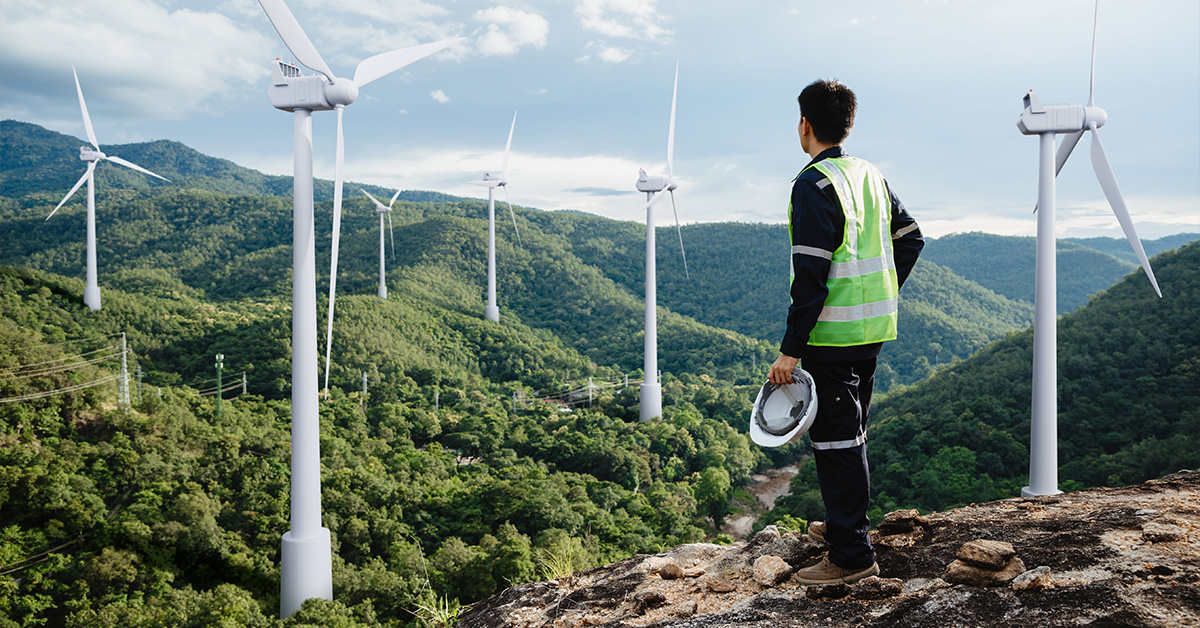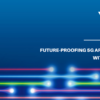Enhancing Wind Farm Monitoring with Fiber Optic Sensing Technology

As the world shifts towards renewable energy, wind farms are becoming a crucial component of our energy infrastructure. Ensuring the reliability and efficiency of these installations is paramount, and fiber sensing technology is playing a pivotal role in achieving this goal.
Fiber sensing technology utilizes the unique properties of optical fibers to detect changes in temperature, strain, and acoustic vibration (sound) along the length of a fiber. By integrating fiber optic cables into the infrastructure of wind farms, operators can continuously monitor the structural health and operational conditions of these critical assets.
So, what uses can it be put to?
Structural Health Monitoring
Wind turbines are exposed to harsh environments, including heat, cold, rain, hail and strong winds, plus—for off-shore farms—waves and corrosive saltwater. Fiber sensing technology can detect changes in strain and vibration, via Distributed Strain Sensing (DSS) and Distributed Acoustic Sensing (DAS), providing valuable data on the structural and operational health of the turbines. This information enables operators to identify potential weak points and take proactive measures to reinforce or repair the turbines before a failure occurs.
Cable Integrity Monitoring
The cables that connect wind turbines to the grid are essential for transmitting the electricity generated. Fiber sensing technology can monitor the integrity of these cables, detecting issues such as depth of burial changes for underground cables, stress and strain on overhead cables, mechanical damage, or thermal anomalies. Continuous monitoring helps prevent cable failures and ensures the reliable transmission of power, it also allows Transmission System Operators (TSO) to optimize (or maximize) power transfer through those cables.
Identifying Risks from Fishing Vessels and Ship Anchors
In the case of offshore wind farms those power cables are often located in busy maritime areas where fishing vessels and ships frequently operate. These activities pose significant risks to those cables. Fiber sensing technology, most likely Distributed Acoustic Sensing (DAS) in this case, can detect disturbances caused by fishing gear or ship anchors, providing proximity warnings and early warnings of potential damage. By identifying these risks in real-time, operators can take immediate action to mitigate the impact, such as rerouting vessels or reinforcing vulnerable sections of the cable.
Predictive and Proactive Maintenance
Fiber sensing technology enables predictive maintenance by providing continuous data on the condition of wind farm components. This data allows operators to predict when and where maintenance is needed, preventing unexpected failures and reducing downtime. By addressing issues before they escalate, operators can save significant costs associated with emergency repairs and lost energy production.
Security and Protection
The field of fiber sensing technology is continuously evolving, with new innovations improving its capabilities. Recent advancements include the enhancement of Distributed Acoustic Sensing (DAS) systems, which provide even greater sensitivity and accuracy in detecting changes in and around wind farm infrastructure. These systems can differentiate between various types of disturbances, such as mechanical or manual digging near cables. They can also be used to set up virtual fencing and provide proximity alerts for people walking or vehicles approaching cables, offering a comprehensive solution to avoid accidental damage or deliberate third-party interference.
Fiber sensing technology is transforming the way wind farms are monitored and maintained. Its ability to provide real-time, continuous data on the condition of wind farm components offers significant advantages in terms of safety, efficiency, and cost-effectiveness. By embracing fiber sensing technology, operators can ensure the integrity and longevity of their wind farms and their investments.
Visit our website to learn more about fiber optic sensing and our sensing solutions.
 Douglas Clague is currently solutions marketing manager for fiber optic field solutions at VIAVI. Doug has over 20 years of experience in test and measurement with a primary focus on fiber optics and cable technologies, supporting the telecommunications industry. Prior to VIAVI, Doug held positions as manufacturing engineer, solutions engineer and business development manager. Doug has participated on numerous industry panels around fiber and cable technology trends. He attended Brunel University in London and graduated with an honors degree in electrical and electronic engineering.
Douglas Clague is currently solutions marketing manager for fiber optic field solutions at VIAVI. Doug has over 20 years of experience in test and measurement with a primary focus on fiber optics and cable technologies, supporting the telecommunications industry. Prior to VIAVI, Doug held positions as manufacturing engineer, solutions engineer and business development manager. Doug has participated on numerous industry panels around fiber and cable technology trends. He attended Brunel University in London and graduated with an honors degree in electrical and electronic engineering.




